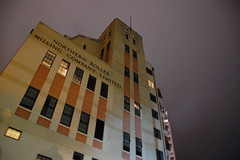 This weekend I went to see a play my brother Scot was acting in: “Compleat Stage Beautyâ€. Apart from watching Scot in his many and various roles, I was also fortunate enough to see a man acting as though he was a man playing the part of a woman who disguised herself as a man. Add to that the sublime vulgarity of the period and it was a great bit of theatre.
This weekend I went to see a play my brother Scot was acting in: “Compleat Stage Beautyâ€. Apart from watching Scot in his many and various roles, I was also fortunate enough to see a man acting as though he was a man playing the part of a woman who disguised herself as a man. Add to that the sublime vulgarity of the period and it was a great bit of theatre.
The thing that fascinated me most, however, was not the magnificent gender-bending performance of the lead actor, nor even the embarrassingly realistic gay sex scene. Rather, it was the references to the person whom we have to thank for recording this complicated subtext to the restoration period.
Samuel Pepys (pronounces “peepsâ€) was an unremarkable fellow, apart from the fact that he fastidiously recorded his thoughts and the events from a decade in his life (1660-1669) into a diary that was subsequently published over 200 years after his death. These personal records are our window into that time in the past and the reason why we can understand so much (and so little) of what was going on in those times. Through his eyes, we experience the Dutch war, the plague, and the restoration period.
Pepys was an almost pathological hoarder of information. He wrote voluminously and had an enormous library of books as well. When he died, he left strict instructions as to how the books should be stored, making specific reference to sorting by size.
It’s this prerogative to record and hoard that I most empathise with. I think this is partly where my own fascination with photography and writing comes from. I like collecting & cataloguing things, even though I don’t always have the patience and stubbornness to follow through. I confess I am not all that interested in history, but I am quiet interested in recording it.
Coincidentally, on Sunday, I was tasked with looking into how our church could digitally preserve our valuable archives for the future, something that I find I am quite passionate about. The image in this post is of the building I live in now, which has a history all of its own: it used to be a grain silo.
I think we tend to underestimate the importance of now, and how precious it is. By all means, we should live in the moment, but as we do, we should record and preserve this now-past for ourselves and for others.